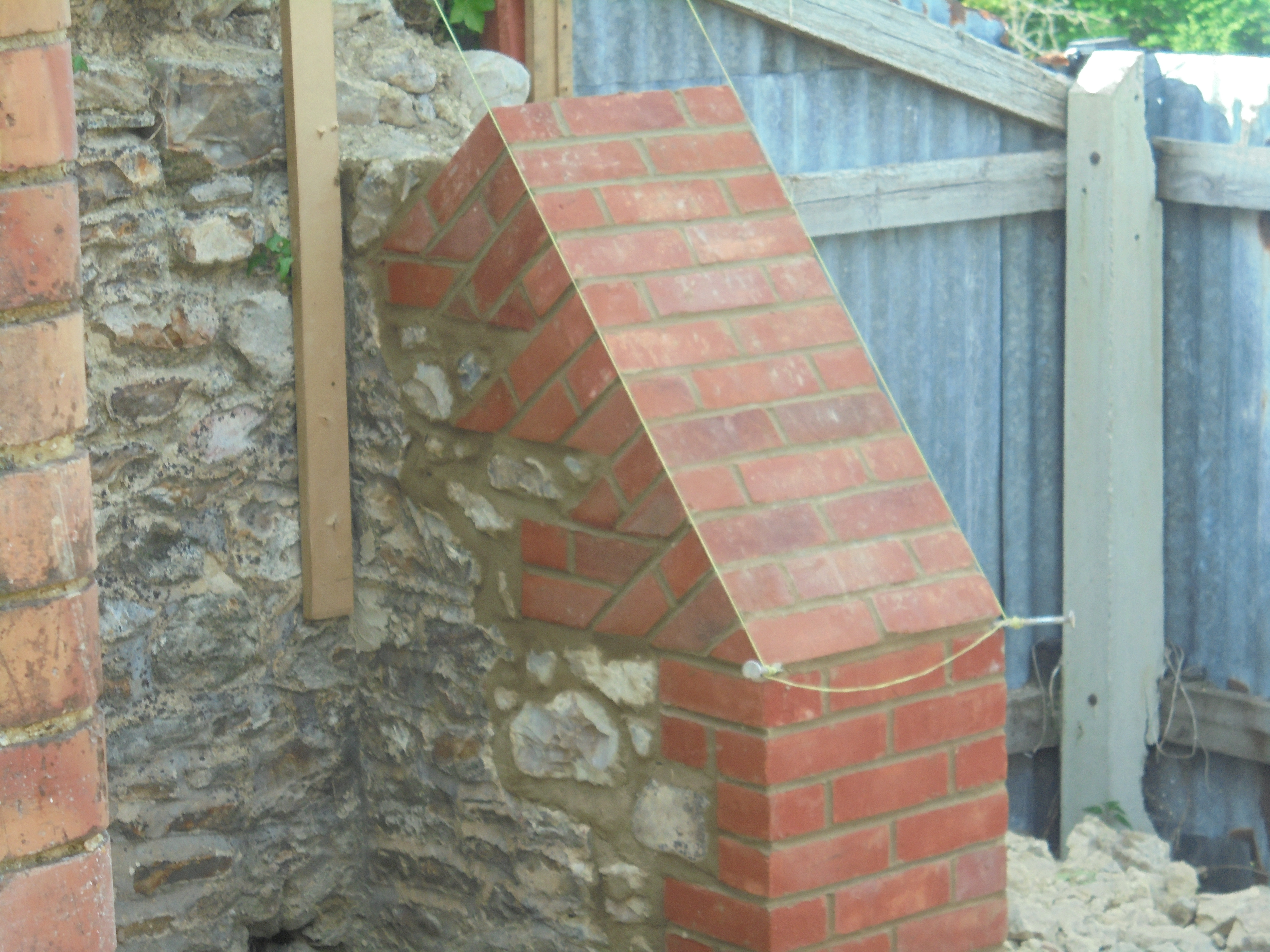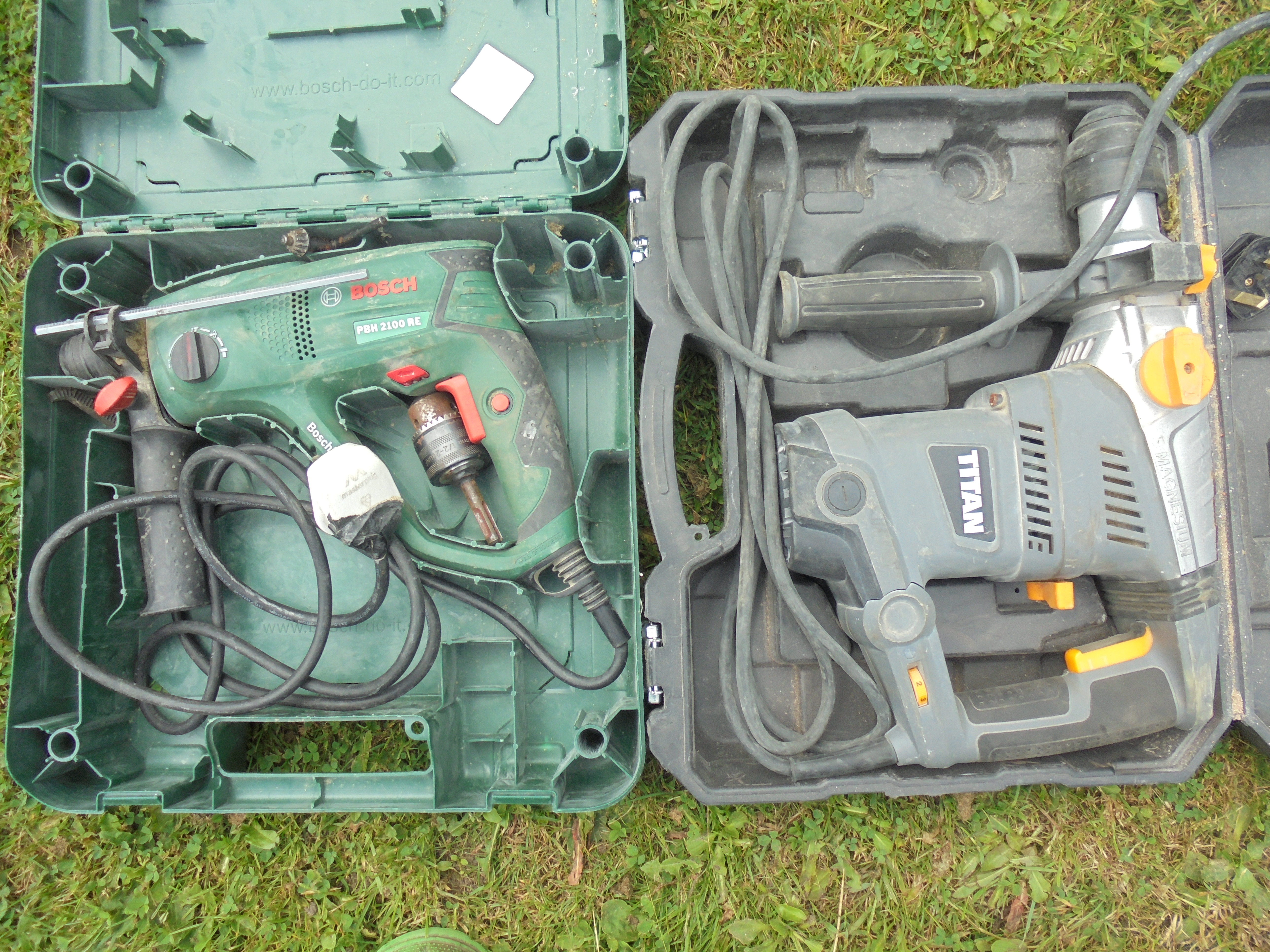We’d like to remind Forumites to please avoid political debate on the Forum.
This is to keep it a safe and useful space for MoneySaving discussions. Threads that are – or become – political in nature may be removed in line with the Forum’s rules. Thank you for your understanding.
📨 Have you signed up to the Forum's new Email Digest yet? Get a selection of trending threads sent straight to your inbox daily, weekly or monthly!
Choosing size for masonry drilling
Comments
-
Yes, masonry bits (not just SDS ones) are inherently 'blunt', but that's because the cutting action is a form of abrading, rather than slicing, the latter requiring a 'sharp' edge to work.grumbler said:
It's not that important in the hammer mode. Most SDS drillbits are inherently blant
They wear rapidly when the material being drilled is better at abrading the bit than the bit is at abrading the material.
The wear typically shows up first in a loss of effective diameter - the tip no longer creating the correct size hole resulting in less clearance for the flutes.
The increase in friction caused by the reduced clearance saps the energy provided by the drill, so a more powerful drill is needed to continue drilling at the same rate. And the loss is not just in the rotational movement, some of the impact energy from hammer mode will be lost in friction between the drill bit and the sides of the hole.
Likewise, poor quality bits are typically made using poor quality materials, requiring a relatively larger diameter flute section to avoid the bit shearing. In which case the reduced clearance has the same effect as described above.
1 -
1
-
Also the weak point of a screw fastening is when you have a force trying to pull a screw directly out of its hole.
The fastening will be much stronger with a sideways force such as from a hanging picture or your stair gate as it would have to drag the screw sideways through the wall material.0 -
chrisw said:Also the weak point of a screw fastening is when you have a force trying to pull a screw directly out of its hole.
The fastening will be much stronger with a sideways force such as from a hanging picture or your stair gate as it would have to drag the screw sideways through the wall material.
On a standard stairgate between two walls perhaps, but the OP's project is with a safety guard (e.g. for use around fireplaces) where substantial tension (pull-out) loads could easily happen.
Even with a standard stairgate, any significant load on the top of the gate when it is slightly open (such as leaning on it) would translate into a pull-out load on the top fixing on the hinge side.
It also depends on the quality of the screw and the material it is fixed into. Screws can (and do regularly) fail in shear perpendicular to the axis - most DIYers and professionals will encounter screws that cannot be undone or pulled out, but fail from excessive torque, or some well-aimed 'sideways' blows from a hammer.
0 -
A lot of people don't realise that screws are weaker than nails in shear. They tend to think that screws always make a stronger job than nailing in all cases and think that nails are used for a quicker job.Section62 said:
It also depends on the quality of the screw and the material it is fixed into. Screws can (and do regularly) fail in shear perpendicular to the axis - most DIYers and professionals will encounter screws that cannot be undone or pulled out, but fail from excessive torque, or some well-aimed 'sideways' blows from a hammer.
I repaired a collapsed car port where the snow had brought it down. The joists had been screwed to the uprights and had sheared off. When I jacked it back it and nailed it the owner questioned if screws would be better, even through they had failed the first time.1 -
Spot on! I’ve pulled up youngsters for screwing rafters.stuart45 said:
A lot of people don't realise that screws are weaker than nails in shear. They tend to think that screws always make a stronger job than nailing in all cases and think that nails are used for a quicker job.Section62 said:
It also depends on the quality of the screw and the material it is fixed into. Screws can (and do regularly) fail in shear perpendicular to the axis - most DIYers and professionals will encounter screws that cannot be undone or pulled out, but fail from excessive torque, or some well-aimed 'sideways' blows from a hammer.
I repaired a collapsed car port where the snow had brought it down. The joists had been screwed to the uprights and had sheared off. When I jacked it back it and nailed it the owner questioned if screws would be better, even through they had failed the first time.Maybe, just once, someone will call me 'Sir' without adding, 'You're making a scene.'1 -
OP, get a set of these: https://www.screwfix.com/p/bosch-straight-shank-multipurpose-drill-bit-set-4-pcs/95958
remember the drill bit does most of the work, start off with a small hole and then go bigger, for what you are mounting I would use a 6mm drill bit with a red plug. I very seldom need to get the SDS drill out unless it's solid concrete i'm drilling0 -
Can I just delurk to say thank you to all the posters for such a helpful thread. I’ve never understood which colour plug/which size drill you should use, and it’s really explained clearly above. I’m going to write myself a note so I can understand it all next time I need to drill a hole.Life is mainly froth and bubble: two things stand like stone. Kindness in another’s trouble, courage in your own.0
-
A few comments on that product suggestion -531063 said:OP, get a set of these: https://www.screwfix.com/p/bosch-straight-shank-multipurpose-drill-bit-set-4-pcs/95958
remember the drill bit does most of the work, start off with a small hole and then go bigger, for what you are mounting I would use a 6mm drill bit with a red plug. I very seldom need to get the SDS drill out unless it's solid concrete i'm drilling
1) The phrase 'Jack of all trades' is often true. A drill bit which can drill "soft concrete, masonry, brick, cement asbestos, light building materials, multilayer materials, ceramics and tiles, wood, plastic, sheet metals and aluminium" can't be optimised for drilling masonry.
2) The essential requirement is to start with a small pilot drill. The smallest size in that pack is 5.5mm which is too large to use as a pilot in most plug fixing situations. 5.5mm would be a good finishing size for use with red (6mm) plugs.
3) Spending nearly £9 on 4 drill bits of not very useful sizes isn't very MSE when a small pilot drill is actually what is needed.
4) I'm gobsmacked that Screwfix (with a significant DIY customer base) are selling any product described as suitable for drilling "cement asbestos".
1 -
When they say masonry it doesn't really mean much. Masonry could be AAC blockwork which any bit will go through with a hand drill to Flint. Bricks could be LBC Flettons or Staff blues. concrete could be 1/3/6 or 1/2/4 or stronger. The aggregate type and size makes a difference to drilling it. The drill bit does some of the work, but with really hard masonry needs a powerful drill.
Here's an example. The Bosch really struggled fixing the timber profiles for the lines to this wall, whereas the Titan went straight through with the same Milwaukee bit.

0
Confirm your email address to Create Threads and Reply

Categories
- All Categories
- 352.9K Banking & Borrowing
- 253.9K Reduce Debt & Boost Income
- 454.7K Spending & Discounts
- 246K Work, Benefits & Business
- 602.1K Mortgages, Homes & Bills
- 177.8K Life & Family
- 259.9K Travel & Transport
- 1.5M Hobbies & Leisure
- 16K Discuss & Feedback
- 37.7K Read-Only Boards






